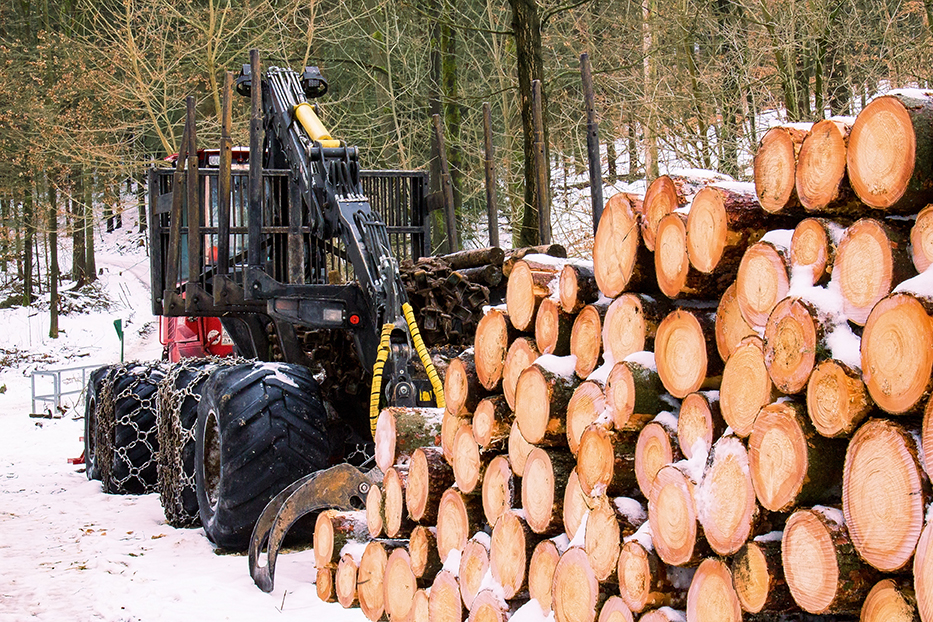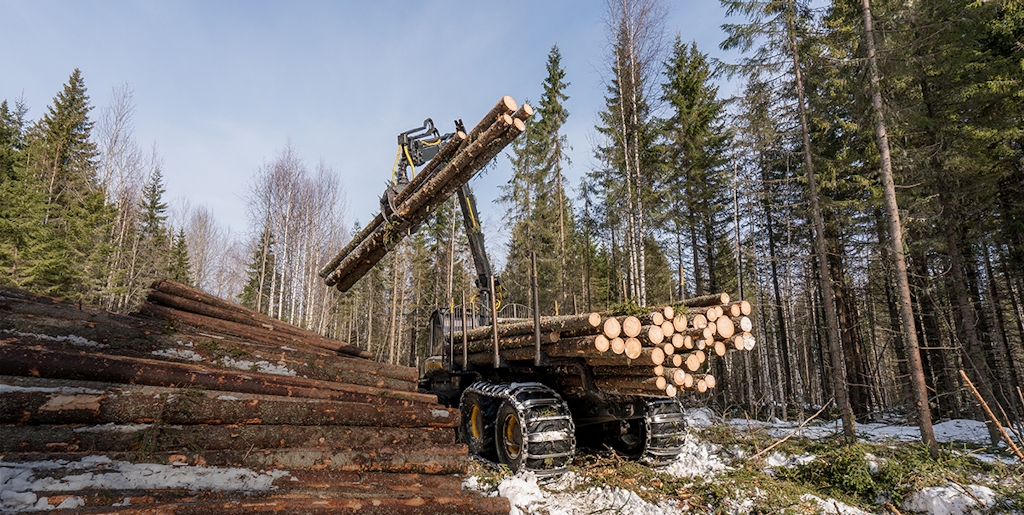Why does New England Forestry Foundation (NEFF) harvest in winter, and what does climate change mean for the future of forestry?
Writing by NEFF Director of Forest Stewardship Chris Pryor and Chief Operating Officer Frank Lowenstein
Winter in New England. Hard ground, blanketed by cushioning snow. For generations, these conditions have made winter the time to harvest timber. The snow cushions falling trunks—protecting the quality of the wood—and together with the rock-hard ground, provides protection against ruts and erosion caused by logging equipment. Winter harvests also avoid disrupting rare wildlife, reduce the chance of insects or fungi spoiling cut timber, and in the past, allowed New England timber harvests to fit in with other seasonal industries such as farming. But climate change is already making winter harvesting a more uncertain proposition. How will that affect New England’s forests and forest management? Read on.

Protecting soil structure has always been one of the primary reasons to harvest in the colder months of the year. Skidders, harvesters, and logging trucks may leave ruts in soft soils, causing productive soils to erode away during storms, which both can pollute streams and rivers and slow future growth. Frozen soil, particularly when covered by a layer of snow, is protected from rutting or compaction by heavy equipment. Frozen ground also offers access to sites with wetter soils that can’t be accessed any other time of the year without causing excessive damage to soils and vegetation.
Protecting rare wildlife is another reason timber harvesting is often carried out in winter. For example, the Blanding’s Turtle, a threatened species in Massachusetts, likes to spend its winters burrowed into the mud or silt at the bottom of wetlands, ponds, and vernal pools in a state of dormancy from November to March. The rest of the year, Blanding’s Turtles can be found in upland habitats traveling between wetlands to feed, mate, and nest. For this reason, timber harvesting in areas of known Blanding’s Turtle habitat is restricted by state law to the winter months when the turtles are inactive. Combine this with proper buffers around wetlands and vernal pools, and upland forests can be harvested and managed properly within the Blanding’s Turtle’s habitat.
The timing of nesting and fledgling of certain bird species offers a similar motivation. Northern Goshawks are one example. Although listed as rare or threatened in only some New England states, they are legally protected on a federal level by the Migratory Bird Treaty Act. NEFF avoids active timber harvesting during their nesting season of April to July to protect both birds and forest workers. Goshawks are fierce defenders of their nests, and have been known to swoop down at intruders and slash at them with their talons.
Finally, winter harvests help prevent spoilage. Cut logs of most tree species are more susceptible to damage by insects and disease when harvested in the summer. Trees cut during the growing season will have more nutrients in them from sugary sap flowing between leaves and roots. This makes them more vulnerable to spoiling. They will not spoil like milk left out on the counter on a hot summer day, but their value can be reduced if not trucked to a mill, sawed, and dried swiftly. For some species, logs cut in the summer and left too long at a log landing or in the woods will start to stain; the stain is caused by fungal spores that reach cut logs either via insects or on the wind.
As climate change disrupts weather patterns moving forward, we will need to find new ways to accomplish our forest management objectives while still protecting forest resources like soil, water and wildlife. Climate change is already reducing the amount of time forestry operations can take advantage of frozen ground. Since the middle of last century, the season of frozen ground has declined by about two weeks on average—about a 15 percent reduction—and the ability of loggers to count on frozen ground has greatly decreased. This makes it harder to get equipment in and out of sites, and to take on larger winter logging jobs.
Loggers will need to become more flexible to take advantage of smaller, more unpredictable windows of favorable weather and ground conditions. This will likely have wide ranging impacts on the frequency of harvesting operations as well as the economics of forestry and forest products in our region. Crews with more technologically advanced equipment that can enter and leave a site quickly will have an advantage. Equipment may have to be equipped with wider treads or balloon tires to reduce rutting and the potential for erosion.
Climate change already affects New England winters in three ways relevant to forestry. First, nights are warming faster than days. This limits nighttime freezing of the soil and wetland areas, which reduces the number of days suitable for winter logging. Warmer winter nights also allow insects that attack trees to survive in greater numbers, increasing tree mortality and slowing growth.
Second, frozen soils arrive later in the fall and leave earlier in the spring. This again reduces the time available for winter harvesting.
Third, more of our current precipitation falls as winter rain, instead of snow. If the rain falls on bare, frozen ground, it is likely to immediately run off into streams and rivers, and be long gone by the time the growing season returns. As a result, trees may experience less water availability in spring, and the forest may dry out earlier in the summer, reducing growth and increasing the risk of wildfire.
Over time, these changes and others associated with climate change will transform the forest, favoring some tree species over others. Forests will also see an increase in blowdowns caused by stronger hurricane winds and more frequent powerful thunderstorms, and more of our annual precipitation coming as heavy downpours will result in more strongly alternating dry periods and floods.
Scientists predict that bastions of the New England landscape, such as the Sugar Maple, may cease to thrive in much or possibly all of the region within the century. More southerly species such as oaks and pines will increase their dominance into new terrain, and perhaps even entirely new species of trees currently found exclusively south of New England will come to colonize the region’s hills. The full effects of these changes on our forests—and the ways we manage and harvest them—are still not fully known, but change and disruption are likely the watchwords of the future.


